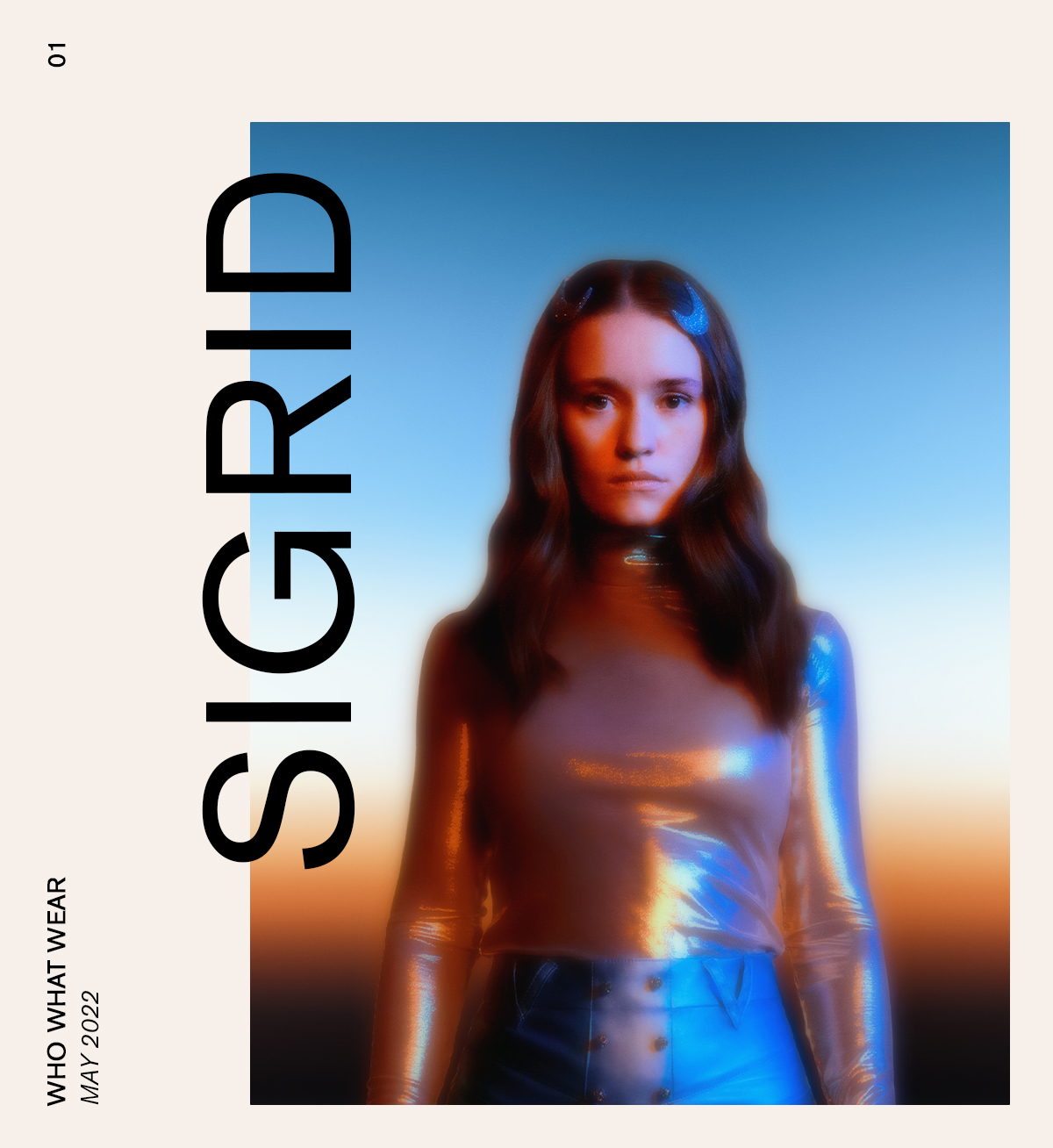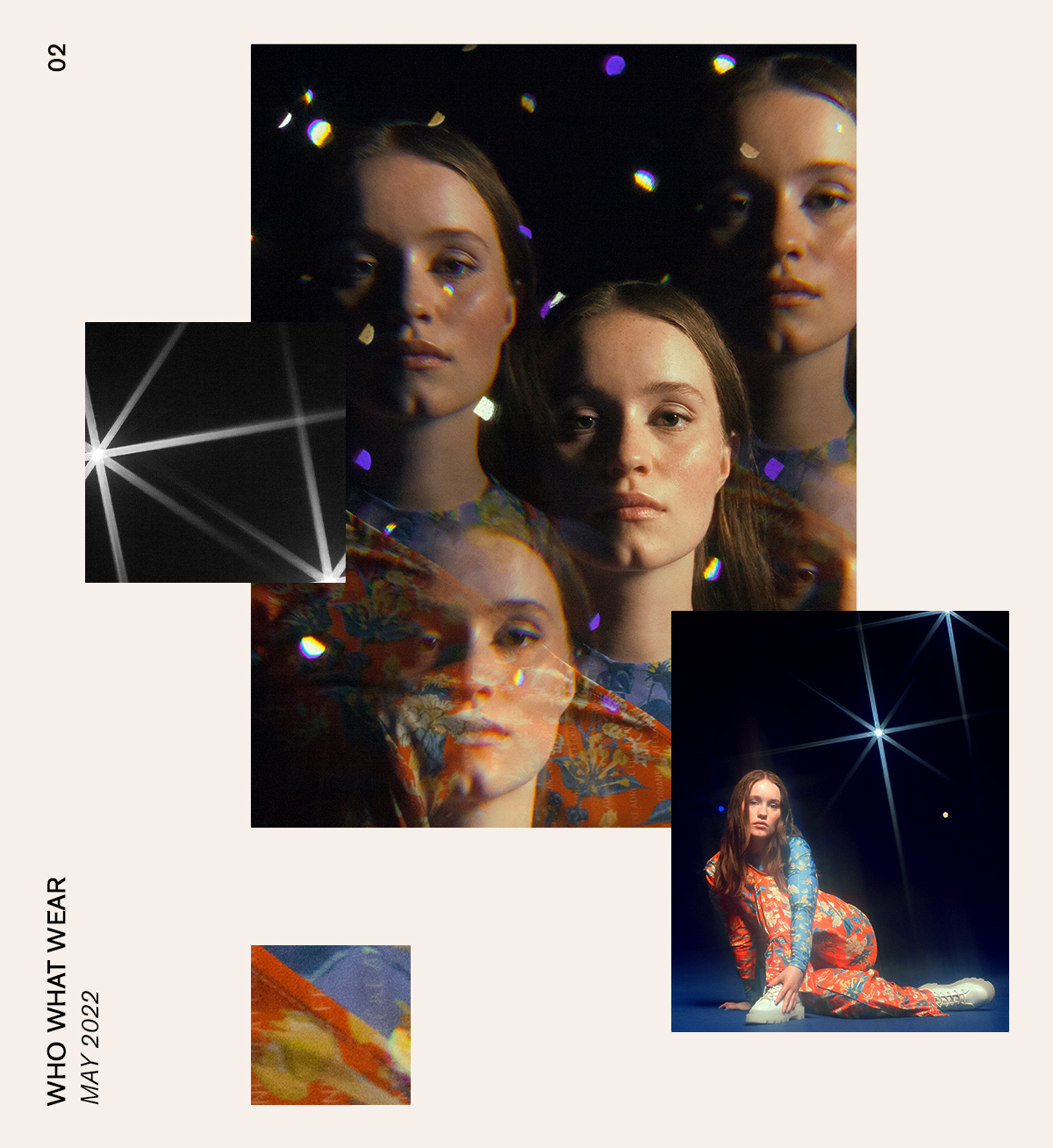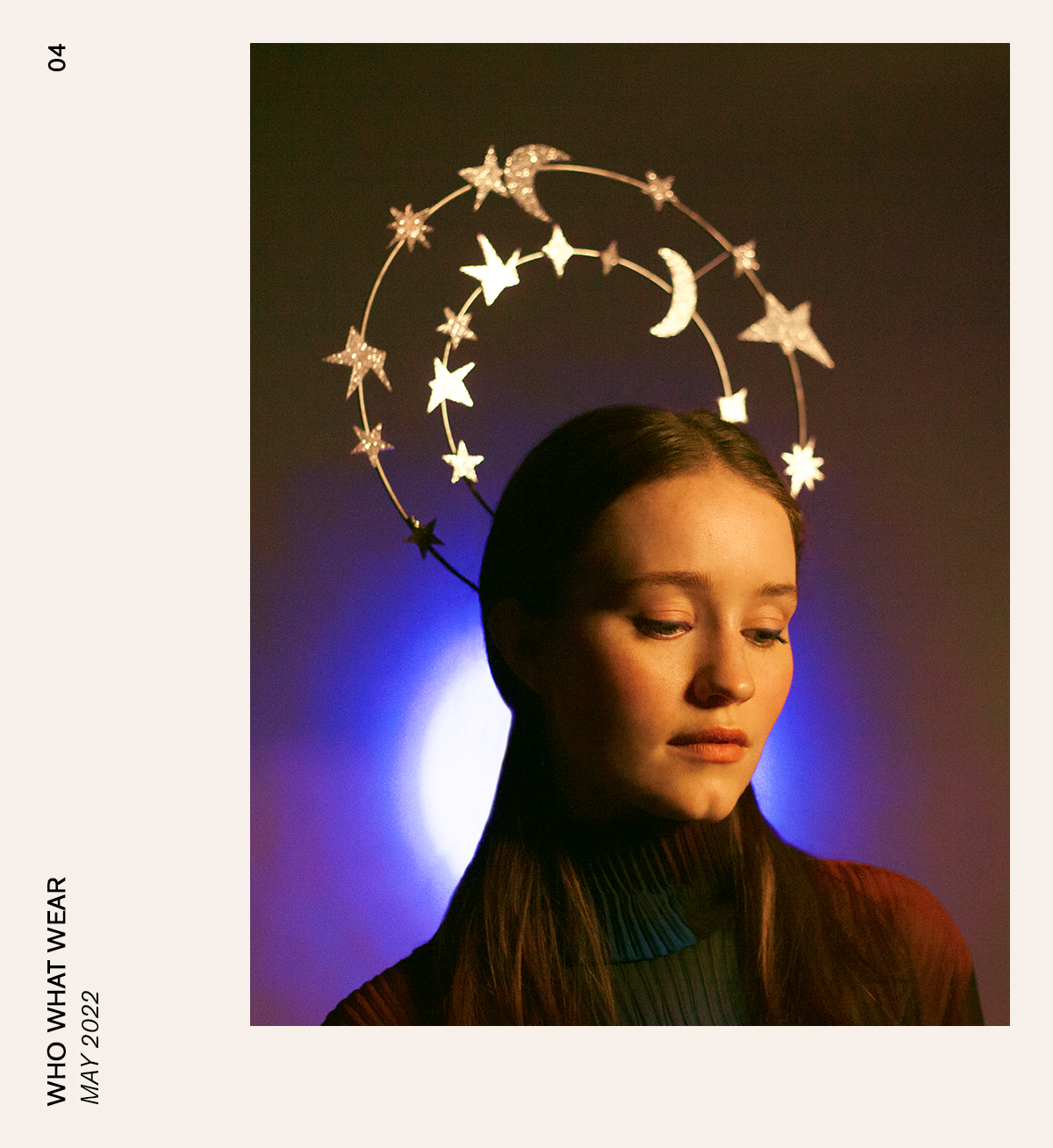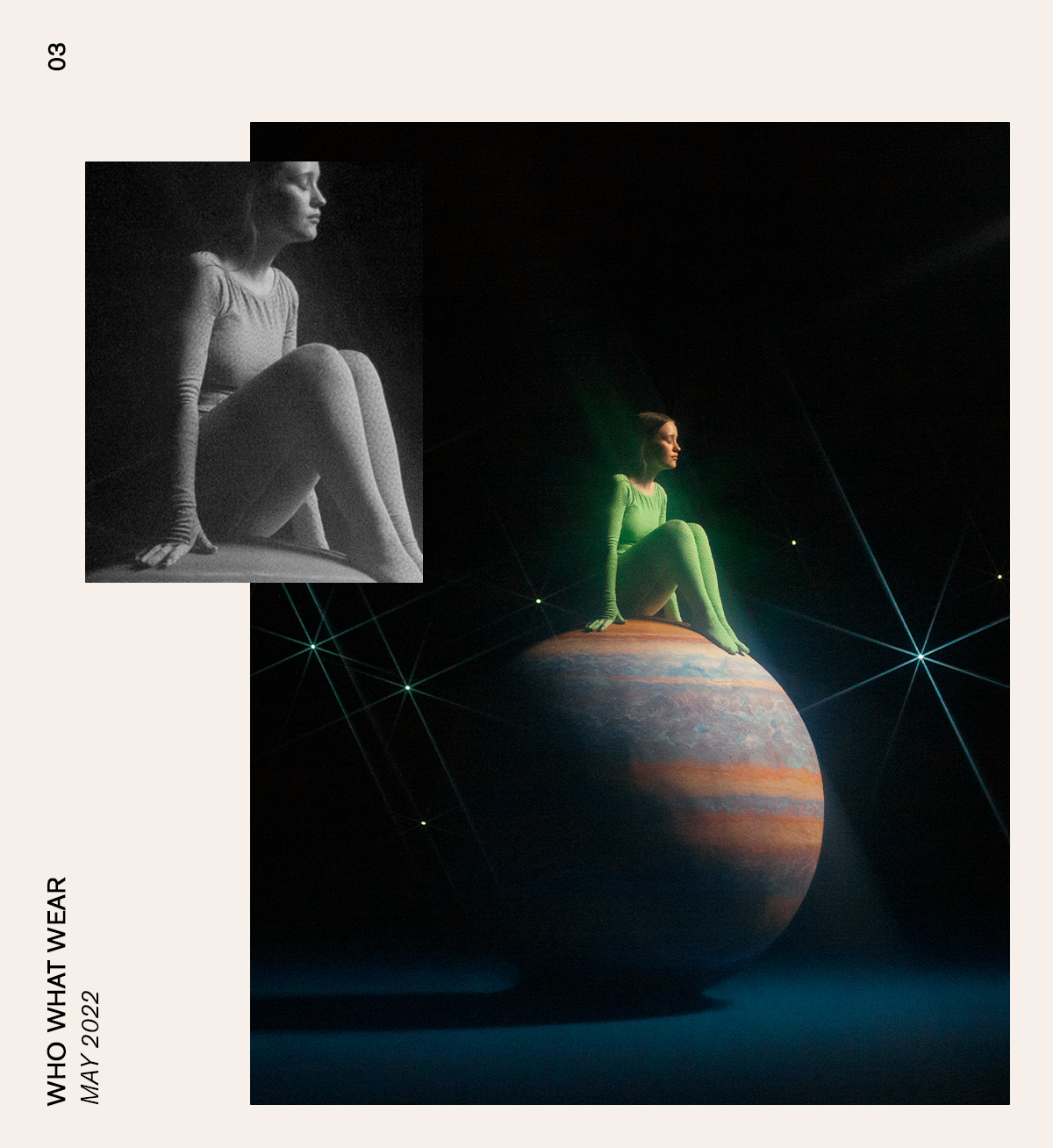Get Your Summer Playlists Ready—Sigrid Is Back With an Empowering New Album
When Norwegian singer and songwriter Sigrid burst onto the scene in 2017 with her explosive single "Don’t Kill My Vibe,” an exciting new pop star was born. The infectious track—which would be included on the artist’s critically acclaimed debut album, Sucker Punch—introduced us to the stunning vocals, relatable lyricism, and cavernous sound that would become the 25-year-old’s calling card. And for the better half of four years, she commanded festival stages and large arenas with her self-assured power anthems and exhilarating live performances—that is, until the world came to a screeching halt.
In the early days of the global pandemic, Sigrid found herself, like many of us, back at her childhood home partaking in self-reflection and succumbing to an identity crisis or two. Conflicted between two versions of herself—the low-key life she leads in Norway and the fast-paced, high-profile life she lives on the road—the first inklings of her next album came to light. Titled How to Let Go, the 12-track LP is considered by Sigrid to be her most honest and personal work yet. It’s a reflection of the past two years for the singer, a time period of navigating her mid-20s and coming into her own. We got our first taste of the new music last summer with the self-love track "Mirror,” a high-octane precursor to the collection of bold songs arriving this month. With Sigrid’s signature "go big or go home” sound embedded throughout, How to Let Go is a perfect summer listen.
Ahead of the highly anticipated release, we met the singer between recording sessions in L.A. to talk about rediscovering her passion for music, where she is at as an artist, and pairing up with a stylist for the first time.

With your critically acclaimed debut album Sucker Punch, you were essentially performing globally for four years, and then the pandemic hit, causing everything to come to a screeching halt. How did you adjust to the drastic change?
It was hard for everyone. It was strange because I’d gotten so used to this high tempo. It felt almost like being on top of the world—just going, going, going—and then all of sudden, I was there in my childhood bedroom in my parents’ house. But it was nice as well. I had time to go skiing and hiking and do other stuff, like go off the crazy carousel for a bit, which I think I needed. It’s really easy to burn out in this industry, so with the time I’ve had off, it’s shown me how much I love my job and how much I want this. Music is my favorite thing in the world, and I’m really happy to be back. Before, seeing my schedule would sometimes scare me. I would get really worried—like, How am I going to get through this? I was on the edge a little bit. And now, I’m just really excited when I look at my busy schedule. I’m ready, and I want it, and I feel stronger in a way. That sounds cheesy, but I can deal with the schedule in a better way.
Your second album, How to Let Go, is out this month. How does this collection of songs reflect where you are at personally but also as an artist?
I think this record is lyrically honest and a deeper cut into me than ever before. I was 100% being honest on Sucker Punch, but now, I’ve been writing so many songs and getting really into it. The record is about what the title is. It’s about how to let go and letting go of insecurities, doubts. … I mean trying [to let go], because it’s a question of, How do I do it? I’m still trying to figure it out. I can get self-critical sometimes, as we all can, and scared of doing the wrong thing, making the right decision. I can get pretty overwhelmed sometimes. But it’s pretty positive as well. I always like to write songs that stem from a frustrated state of mind because that just inspires me a lot. That’s usually when you want to go to the studio and write is when you are feeling some frustrating thoughts. But then, I always try to find a solution to it because I’m thinking, "I’m going to tour this album for so long. [I] might as well make it fun. There are some just straight-up sad songs in it, but there’s not that many of them. I feel like they all have this positive spin on it. That is calculated by me just because I want to have fun when I’m singing it night after night.
So this idea of letting things go, where did that come from for you? Did you feel like you hit a breaking point, where it was like, "I need to figure out how to let these things go”?
This is not a story I made up. It is very natural where it came from. We were writing most of the album in Copenhagen, Denmark, for the past year or two years, and it just kept popping up, this "letting go” thing. It would make it in almost every song at some point, and there would be a little hint of letting go of something. Even lyrically, there is "you gotta let it go” in "Burning Bridges,” and then there was "Grow,” and the chorus was literally, "How to let it go, how to let it go.” So there was a lot of it, and then all of a sudden, we were like, "Wow, you have a lot to let go of,” so that’s where the title came from. I think it’s a thing of age as well. Sucker Punch and that era was a lot about going openly into the world, and I was also 19 and 20 when I wrote that album, so the topics were very in that space and age. Whereas this record—of course because I’m writing all of these songs about me and my personal life—it’s going to have this second theme of being an artist. My job is my life, so that’s what I write about. But also, there is this second layer of being a 25-year-old or 23, 24, 25 and what happens and how you look at life maybe a bit differently because you’ve been through the washing machine and dryer of your early 20s. You are in your mid-20s now, and you know a little bit more, but you still feel like the more you know, the less you know. So yeah, it’s just written from an older perspective. But I’m still a kid in many ways!
You’ve talked about "It Gets Dark” being the first song you wrote for How to Let Go and it really setting the tone for the rest of the album. Can you expand on that a bit more?
It was written here in Los Angeles, actually, in January or February of 2020 right before [the pandemic]. If I remember correctly, it was my final trip before lockdown. I was still in L.A. when the former president said he was going to close the borders, and I was freaking out. I was like, "Am I going to get home?” I still remember being on the flight being a little bit worried—like, Are they going to let me in when I come to Norway? So yeah, "It Gets Dark” was one of the final songs I wrote here. I wrote "It Gets Dark” and "Mirror” in two days. It was pretty insane. At that time, I had been home in Norway for a little bit after the Sucker Punch tour had finished and all of that. The conclusion of "It Gets Dark” is that I can sometimes feel a bit torn between my life in Norway and my life outside of Norway. It’s just culturally very different. I’m the same person in English as I am in Norwegian, but there are different flavors of you that come when you speak different languages. The pace [is different] in Norway, and that’s because I don’t really work that much when I’m there. I ski. I hike. I hang with my friends. That’s what I do in Norway. But then when I’m outside in London or New York or Los Angeles, I’m just work, work, work—full-on. But the conclusion is that I’m just really happy with my life, and I feel super privileged to be doing what I’m doing. So that’s the personal story behind the song, but I also wanted to write so that it could be relatable to others because that’s how I love to write my songs. It’s also the thing of like you need to feel some difficult feelings and the good feelings as well. I love that. A little struggle before the good stuff makes that high just feel so much better.
Can you tell us a little about your writing process?
I had a session yesterday with a producer I have never met before and a writer I’ve known from before, and I love that mix. I love writing with people I know really well, and you don’t have to explain anything. It’s just free. And then, I love when you meet someone for the first time and you have no idea what it’s going to be like. It’s very exciting. It’s like a first-date feeling without the romantic tension at all. It’s just friendly, but it’s just this feeling of "Ah, what are we going to be able to make?” And if it’s like, "Do you like this band?” and the person is like, "Yeah, I love it.” It’s like, "Oh my god, I can’t believe we love the same things.” It’s that exciting thing of figuring stuff out for the first time that I love about writing-session culture. So that’s fun.
But for this album, it was Emily Warren; Sylvester [Siversten], or Sly is his producer name; and Caroline Ailin. They were the three main people. There were some other writers as well, but that was the main group that I wrote this whole album with. We know each other so well. It was amazing. I love having those two things going at the same time. The difference from the Sucker Punch album, where I was writing a song in two days, and I was like "Bye, I have to go,” and the demo vocals were the vocals that were going to be on the album. This time around, because of the pandemic as well where I wasn’t traveling the world, we could go back day after day and polish, finish, change things, which was really cool.

Your first single off the new album was "Mirror.” Why did you choose that song?
I just love the song. I thought it was a good start to the campaign, like "Ta-da! I’m back!” And I think there was definitely something in there for people who have followed my music for a while. It’s very me, but also, the production was a little different than what I did before, so I felt like it was teasing a new era. It’s just really catchy, I think. It randomly was number one on the dance radio charts here one week, which came out of nowhere. So that was really fun.
It’s a great self-love anthem. Did you feel like you had this moment of truly accepting yourself in the writing process of this album?
Yeah. I mean I have this acceptance of it’s all good, and I’m cool. It’s always a work in progress. I have those moments every two weeks, and then I’m back. I don’t want to sound like I’m complaining. That’s always my big worry with doing interviews actually. You are given this platform, which I am so honored and privileged, and thank you for talking to me, but talking about things that are on your mind, I just don’t want to come off as complaining about my stuff.
But everyone goes through that feeling.
Yes, everyone goes through it. "Mirror” is a pretty dramatic song, but I love writing dramatic songs. I think it’s important, and I hope it allows… If you are listening to the songs, it allows you to get into your feelings.
It does. And the messaging is so important.
For me, it was written about personality stuff. Like, have I said something wrong? Do people like me? That type of stuff that one can get doubts about. But I’ve also gotten a lot of comments from people who have heard the song in a body-positive way, which I love. I’m so here for that.
You have worked with director Femke Huurdeman and producer Canada on two of your videos, "It Gets Dark” and "Mirror.” What do you love about their style?
I have been a massive fan of Canada for years. I was so happy when they wanted to do it, and it finally aligned. Femke is amazing, such a cool director. I would do anything for Canada and Femke. They had me working. "Mirror” was an intense six-day shoot. Three days of actual shooting but all the preparation and fitting days. It was the first time I met my stylist. I’m working with a stylist for the first time, which is very exciting. But yeah, "Mirror” was shot in Barcelona. We rented a big mansion outside of Barcelona. It was so sick. My sister was there. We had such a great time. I just loved shooting in Spain. They are so fun, welcoming, and hardworking. They really put their heart and soul into these videos, and you can tell. It was the most tiring shoot I’ve done, I think, but I just had a great time.
So when you work with them, are you involved in the concepting of the videos?
It was very much collaborative. I’m very involved in everything I do, but visually, I just love to hear people’s interpretations of the music. With Femke, I can’t remember who had the idea, but I think I just wanted to perform in the video, lip-sync, show my personality, put me in fun scenarios. But my favorite scene was the bow and arrow, so cool. I knew I wanted it to feel grand.
And "It Gets Dark,” again, by that point, I was like, "I will do whatever.” Then Femke was like, "I have this space thing I want to do,” and I was like, "Yes!” Me and Femke were just a lot on the phone texting and sending references back and forth. It’s pretty out-there. The song is pretty serious, I guess, and leaning toward a lot of inspirations of my childhood, like Coldplay stadium anthems. I just wanted it to sound like it would be blasted out of festival stages. Just big. The video then is like a space-age theme. I knew I wanted to perform and for it to feel spacey, but then it just turned into this arts-and-crafts dream. Every set is handmade. Everything was handmade by Canada. And the outfits and me being reborn out of this egg as a space princess or whatever, it was bonkers but really fun.

You collaborated with Griff on the single "Head on Fire.” Can you tell us about how that came about?
So Griff and I, you know, we followed each other on Instagram for a long time, and I’ve been a fan of her music. My favorite song of hers is "Shade of Yellow,” love that one. We hadn’t met before, but we were both at this London Fashion Week show last summer. It was Reuben Selby. Always at those events, you’re a bit nervous—like, Do I know anyone here? But then, we walked up to each other and said hi. It was lovely, and then we shared pizza and decided we should meet up next week. Because we both had busy schedules, it was easier to tell our managers we’re going to go in the studio versus asking if we could go get a coffee between sessions. We basically just wanted to meet up and hang out, but we got into the studio and started writing a song, and then by the end of the day, we were like, "We should probably finish the song so we can tell our managers.” And that was "Head on Fire.” It’s kind of random who sings what part because it was such a collaborative process. We wrote it, and the lyrics were written together, but by the end of the day when we were singing the vocals, we were just passing the mic back and forth. It’s really cute, and it’s been so much fun to work together.
Are there any other artists you are dying to work with?
Yeah, there are always. I’m just so scared of saying it out loud because then if it doesn’t happen… I might just be superstitious. But yeah, my door is open. Griff was my first collab ever. I’m down. It just has to be the right one.
You played at the Fonda here in Los Angeles last month followed by a show in New York. How does it feel to perform live again? What do you crave about performing live?
I’m so hyped. I think when we talked about getting a bit insecure about yourself for the past two years, for me, that’s been very connected to not being able to tour. That’s a huge part. Your job is a huge part of your identity, and touring for me, that’s me. That is my favorite thing about being an artist. That’s why I want to be an artist and not a writer because I want to sing my songs live. So to be able to be back now and tour, it’s amazing. I think I feel the best about myself when I’m onstage, which is a bit weird. I get really nervous like five minutes before, and then 30 seconds into the first song, it’s like, "Okay, cool.” It just makes me really happy. It’s pure joy.
Is there a fashion profile for this album, like a through line between your music videos and live shows?
I am too stubborn to have a real thread. My stylist is Ahida Agirre. She is Spanish. [We got connected] for the "Mirror” shoot because she works a lot with Canada. She is amazing. We’ve become really good mates. She’s part of the crew now. I’ve always been very practical, like today. That’s the thing. I love exploring now with dresses and skirts, and it can be anything else—like a suit or something—that’s more than the jeans, T-shirt, and my sneakers. That is really exciting, and I love doing that for shoots. For music videos, especially the "Mirror” and "It Gets Dark” videos, it was fun to open up with [letting] the fashion be a part of the art, the whole thing. At a music video shoot, it doesn’t need to be that practical. I don’t mind wearing the crown, the space crown, or the massive pink dress from the "Mirror” video because I’m not going to run up and down a stage. But when I’m onstage, it’s a different thing, a different scenario. For me, that’s like going to the gym. Preferably, I would be in my tights or something. But I want to look cool, so that’s where the jeans and T-shirt come in. It’s comfortable, and that, for me, is never going to change. Practicality and comfort will always come first for me, but it’s been really fun to play with these fashion things and go to fashion events. I love it. I have a massive folder of over 1000 inspiration pictures. One of my favorite things is to look at fashion online, new brands, new designers that I’m really into. I always look at runway shows. And I’ve done that. Even though fashion was not a part of the previous campaign, I was still obsessed with it at that time. I just didn’t find the right outfits to put it into my thing.
Do you have any favorite brands or designers right now?
First of all, I love Harris Reed. Miss Sohee. There is a lot of UK stuff, a lot of metallics, a lot of color. I love vintage. Here is a vintage Dolce & Gabbana. The butterflies are amazing.

Okay, last question. How are you feeling now that the album is here?
I am actually just thinking, "Thank god that I still love this album.” I am so proud of this album. I love the Sucker Punch album as well. It was such a good time, and I’m proud of those songs, but this feels more me than ever. I just love this space that I’m in now. It’s a bit more organic. There’s more room for the instruments, and my vocals are breathing a bit more. It’s more instrumentation, a lot of guitars, electric bass, drums, and I love it lyrically. We’ve had rehearsals, and it sounds really good live as well! I’m psyched. I have a gut feeling I’m going to love it for the next few years as well. I’m not tired, which is a good sign. And I’ve listened to the demos a lot. I’m the kind of person… I’ll get in my car and put on the songs and be singing along just hoping no one notices me. Just full on blasting the demos.
I hope that it is a record that can bring… I don’t know if solitude is the right word, but it can bring comfort. There are definitely some songs that will transport you into another world, which is the beauty of music. And there are songs for different times and parts of your life. There are definitely a lot of songs for a road trip or being in the car or on the bus or public transportation going somewhere. That’s my favorite place to listen to music, so bops to get you through the day and give you a boost. There are a lot of pre-game songs, just songs that work really well when you are having drinks with your friends before you go out. There are a lot of crying songs, just really sad ones. And there are some chilling-at-home, cooking songs. That’s one of my favorite genres—chill music I’ll have on in the background. And then the whole album is just a festival set in my opinion.
How to Let Go is out May 6.
Up Next: Orion Sun Is Just What Your Playlist Is Missing
Jessica Baker is Who What Wear’s Executive Director, Entertainment, where she ideates, books, writes, and edits celebrity and entertainment features.